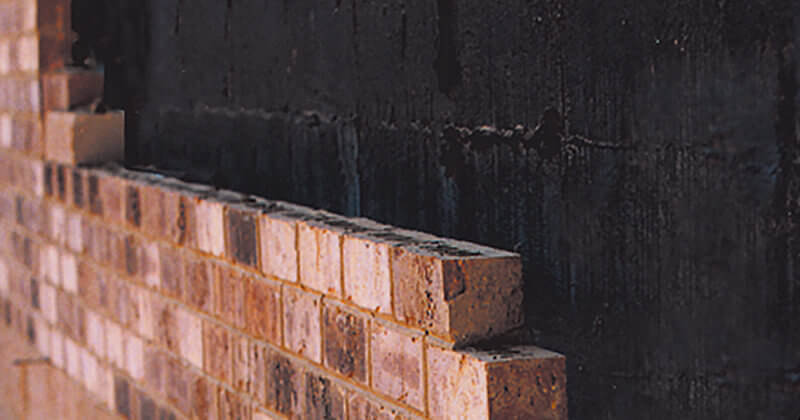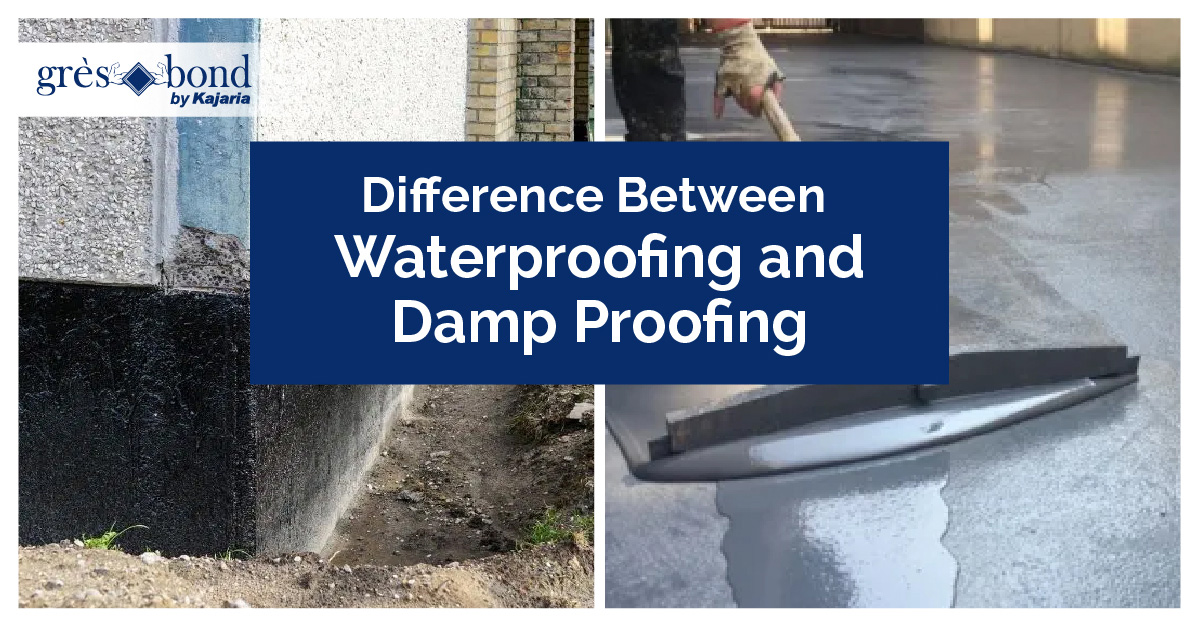Demystifying the cost of professional damp removal newcastle
Demystifying the cost of professional damp removal newcastle
Blog Article
Exploring the Various Techniques and Solutions for Effective Damp Proofing
Moisture in buildings presents substantial obstacles to both architectural honesty and indoor air quality. Numerous techniques and options have actually arised to battle this prevalent issue. From conventional damp-proof membranes to ingenious chemical treatments, each method offers special advantages. Recognizing these alternatives is necessary for efficient wetness control. Picking the appropriate remedy depends on particular structure problems and demands, motivating more expedition into the most effective moist proofing strategies offered.
Recognizing the Sources Of Moisture
Dampness can arise from numerous sources, recognizing these causes is essential for efficient removal. Frequently, dampness stems from three primary resources: increasing damp, passing through wet, and condensation. Increasing damp takes place when groundwater travels up-wards through porous materials, such as block or rock, usually as a result of a lack of an effective obstacle (damp removal newcastle). Passing through moist is generally created by external aspects, consisting of roofing leakages, defective seamless gutters, or damaged wall surfaces, permitting water to infiltrate a residential property. Condensation, on the other hand, arises from excess dampness in the air, commonly worsened by poor ventilation and temperature level distinctions, causing water beads basing on surface areas. Identifying these underlying problems is crucial, as each sort of dampness needs a customized method for removal. Correct assessment aids in identifying one of the most efficient services, ultimately securing the structural honesty of a structure and enhancing interior air top quality
Conventional Damp-Proof Membrane Layers

Chemical Damp-Proofing Solutions
Chemical damp-proofing services use an ingenious approach to stop wetness intrusion in buildings. These approaches generally involve the application of liquid chemicals that permeate stonework and create an obstacle versus increasing wet. Generally made use of chemicals consist of silanes, siloxanes, and other water-repellent agents that react with surface products to develop a hydrophobic layer.The application procedure generally calls for boring openings right into the wall surfaces, injecting the chemical solution, and permitting it to cure. This technique is specifically useful for older frameworks where conventional damp-proof membranes may be unwise. Moreover, chemical damp-proofing can be much less turbulent and more affordable than substantial renovation projects.While reliable, these options depend on proper application and ecological conditions for peak efficiency. Routine upkeep and tracking are essential to guarantee the longevity of the damp-proofing treatment. Overall, chemical damp-proofing stands for a versatile choice for safeguarding structures against moisture-related damages
Cavity Wall Construction Strategies
Cavity wall building and construction techniques use various benefits, particularly in dampness control and energy performance. By incorporating an air space in between 2 layers of masonry, these wall surfaces effectively alleviate water access while improving insulation. This mix not only secures structures from dampness however additionally adds to decreased energy intake.
Advantages of Cavity Walls
When taking into consideration reliable damp proofing methods, the advantages of tooth cavity walls stand out plainly. Dental caries wall surfaces include 2 different layers, developing an air gap that properly decreases moisture infiltration. This design lessens the threat of wetness, as the outer wall functions as an obstacle versus rain and water ingress. Furthermore, tooth cavity wall surfaces improve thermal insulation, which adds to power performance by reducing heat loss. They likewise supply audio insulation, aiding to create a quieter indoor setting. In addition, the air void enables ventilation, which aids in moisture control and reduces the likelihood of mold development. These advantages not only improve the total convenience of a structure however additionally contribute to its longevity and architectural integrity.
Dampness Control Strategies
Efficient wetness control strategies are critical in cavity wall surface building and construction to guarantee long-lasting protection versus moisture. One main approach entails the incorporation of weep openings, which facilitate water drainage from the cavity, protecting against buildup. In addition, using breathable membrane layers can help handle dampness degrees while allowing trapped vapor to run away. Correct placement of insulation is likewise crucial, as it must not obstruct drainage courses. Moreover, ensuring that the external leaves of the dental caries wall are created with waterproof materials boosts general toughness. Routine maintenance checks are necessary to determine any type of obstructions or damages early, securing the framework's stability. Eventually, a combination of these methods forms a durable protection versus wetness invasion in tooth cavity walls.
Insulation and Energy Effectiveness
Insulation plays an important function in improving power effectiveness within tooth cavity wall surface building. By including insulating materials, these wall surfaces develop a thermal obstacle that decreases warm loss and minimizes energy consumption. Effective insulation not only aids keep a secure indoor temperature level yet additionally mitigates the threat of wetness, as it protects against condensation within the wall cavity. Numerous strategies, such as making use of rigid foam boards or mineral woollen, can be used to attain optimal insulation efficiency. Furthermore, appropriate installation is crucial to ensure that spaces and gaps are lessened, which can otherwise endanger energy performance. Ultimately, a well-insulated cavity wall contributes substantially to overall sustainability and decreases heating and cooling prices for house owners.
Exterior Damp Proofing Techniques
External moist proofing approaches are crucial for protecting structures from dampness seepage. 2 efficient techniques consist of the application of waterproof membranes and the setup of French drains. These remedies aid reduce water buildup and maintain the integrity of structures.
Waterproof Membrane Layer Application
While various techniques exist for avoiding wetness access, the application of water resistant membranes remains an extremely effective exterior moist proofing technique. These membrane layers are generally made from materials such as polyethylene, rubber, or modified asphalt, giving a robust barrier against water infiltration. The installment process includes using the membrane layer to the outside surface areas of wall surfaces or foundations, making sure full coverage to stop leakages. Correct attachment and sealing at joints are essential to check here making best use of performance. Waterproof membrane layers can be used in numerous kinds, consisting of fluid layers and sheet membrane layers, allowing for flexibility based on the specific requirements of the structure. This approach not just shields structures from moisture yet additionally boosts their long life and architectural honesty.
French Drainpipe Setup
One efficient technique for handling groundwater and avoiding wetness build-up around a building's foundation is the installment of a French drainpipe. This drain system includes a trench loaded with crushed rock and a perforated pipeline that reroutes surface water far from the structure. Appropriate installation requires careful planning, making certain that the drainpipe inclines far from the structure to assist in suitable water flow. Furthermore, the location of the drainpipe is essential; it needs to be placed in locations susceptible to pooling or excess dampness. Regular maintenance, consisting of cleaning particles from the crushed rock and ensuring the pipeline continues to be unblocked, is necessary for long-lasting effectiveness. Ultimately, a well-installed French drain can greatly lower the threat of water-related problems in cellars and structures.
Inside Waterproofing Methods
Inside waterproofing methods are essential for safeguarding a structure's inside from moisture infiltration and potential water damage. These methods normally entail the application of customized products and methods designed to develop a dampness obstacle within the structure. One common method is the use of water-proof layers or sealants on walls and floors, which protect against moisture from permeating surfaces.Additionally, setting up indoor water drainage systems, such as sump pumps, can successfully handle water build-up in basements and creep rooms. An additional technique entails using vapor barriers, which are installed to hinder dampness motion from the ground right into living spaces.Moreover, resolving any type of splits or spaces in walls or structures with proper sealers assures a thorough defense against water intrusion. By carrying out these interior waterproofing strategies, homeowner can substantially reduce the risk of mold growth, structural damages, and other moisture-related concerns. Appropriate implementation of these methods is crucial for lasting defense and structure honesty.
Routine Maintenance and Assessment Practices
Routine upkeep and inspection practices are vital for guaranteeing the lasting performance of wet proofing remedies in any kind of building. Routine checks enable homeowner to recognize very early indications of moisture breach, such as peeling off paint, mold growth, and musty smells. These indications can signify underlying concerns that need immediate attention.Inspections should be performed at the very least annually, concentrating on vulnerable locations like cellars, creep rooms, and exterior walls. During these analyses, homeowner need to check out sealers, drain systems, and ventilation to verify they operate correctly.Additionally, preserving rain gutters and downspouts is important, as clogged systems can bring about water buildup near the structure. Executing a regular upkeep schedule, in addition to prompt repair work, can considerably expand the life expectancy of damp proofing actions and safeguard the architectural integrity of the structure. Proactive actions eventually contribute to the total health and wellness of the living environment.
Regularly Asked Questions
The Length Of Time Does Damp Proofing Normally Last?
The period of damp proofing effectiveness differs, normally lasting between 20 to 50 years. Aspects such as application quality, ecological conditions, and maintenance methods considerably influence the long life of the wet proofing treatment.

Can I Damp Evidence My Home Myself?
The individual pondered the expediency of do it yourself damp proofing. With correct research and the right products, it is possible. They also identified the importance of expert guidance to ensure long-lasting efficiency and protect against future issues.
What Are the Indicators of Ineffective Damp Proofing?
Indications of inadequate damp proofing include relentless musty odors, noticeable mold growth, peeling paint, wet spots on walls, and timber degeneration - damp proofing newcastle. House owners should resolve these issues without delay to avoid more damages and health and wellness concerns
Does Damp Proofing Affect Indoor Air Quality?

Just How Much Does Specialist Damp Proofing Cost?
Expert moist proofing costs vary substantially, usually varying from $1,000 to $5,000 depending on the residential property's dimension, the degree of the damp concern, and selected approaches. Each situation requires a customized evaluation for exact rates. Typically, dampness stems from three key sources: climbing moist, permeating damp, and condensation. When taking into consideration effective wet proofing techniques, the advantages of dental caries walls stand out plainly. External moist proofing methods are crucial for safeguarding frameworks from moisture seepage. While numerous techniques exist for preventing wetness access, the application of waterproof membrane layers remains an extremely reliable external wet proofing strategy. Indicators of inefficient damp proofing include consistent mildewy smells, visible mold and mildew growth, peeling paint, damp patches on wall surfaces, and timber degeneration.
Report this page